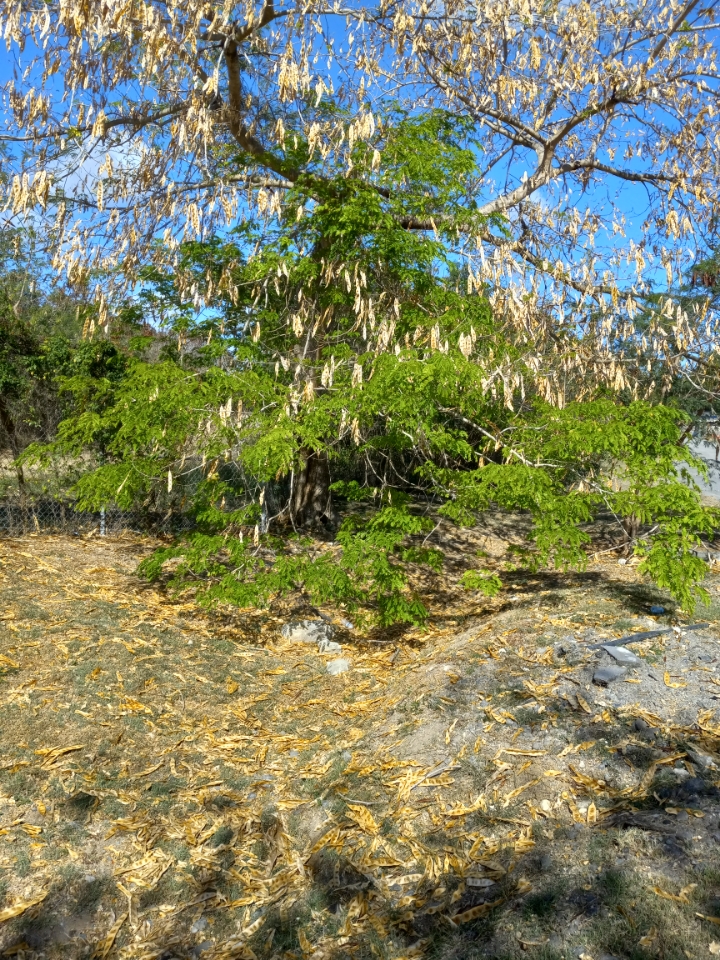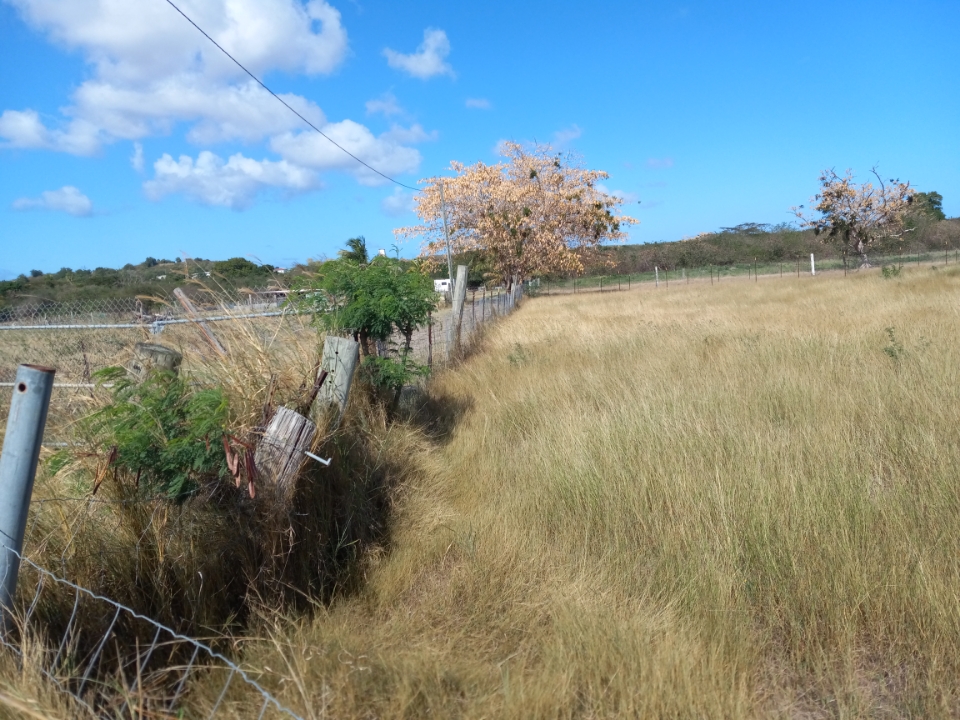
For the past few months, whether you are driving on the highways, along the roads, hiking or walking, you can’t help but observe the thibet trees, with their wide-spreading crowns and somewhat drooping branches, blowing in the wind.

The gold-brownish pods of the thibet trees indicate that we are in the dry season of the winter months. However, as the pods get to a darker tan-brown, it is an indication that we are in the height of the dry season, which means spring is upon us. Prior to the thibet tree, our first native tree to blossom during the spring season is the white or pink cedar (Tabebuia heterophylla).
Thus, spring is here, with a few showers of rain now again. However, we would not be in full spring in the Virgin Islands until the thibet trees turn from tan to green leaves. The thibet is a fast growing, non-native, medium-sized deciduous tree reaching about 65 feet in height and 1 ½ feet in diameter or larger, with a spreading crown of thin foliage. In some tropical regions of the world where the tree grows, it reaches 100 feet in height, with a massive crown of 90 feet across and slightly buttressed trunk up to 10 feet in circumference, due to higher rainfall.
The outer bark of the tree is gray and fairly smooth in the early years of growth. In the later years, the bark becomes fissured, scaly, or rough. If the tree dies for whatever reason, the bark loosens and falls off in large, irregular plates. The root system of the thibet tree is shallow, often superficial, and wide-spreading. Some roots can grow 75 feet beyond the tree canopy. The leaves alternate between six to 16 inches long and are composed of two to four pairs of lateral axes (pinnae), each with four to nine pairs of leaflets.
Thibet trees usually appear with new leaves over an extended period of time, beginning at the end of the dry season. In the Caribbean region, this occurs between April and September. As of now, some thibet trees on St. Croix have begun to put out flowers along with green leaves. The heavily fragrant, yellowish-white or cream-colored flowers develop on lateral stalks in rounded clusters of 2 to 2 ½ inches across with the many threadlike or “powder-puff” heads, borne singly or in groups of two to four at the tips of branchlets.

Currently, where some thibet trees have begun to put out flowers, the dry pods remain on the tree well into the flowering season. Thus, the pods remain for many weeks, rattling in the wind, eventually falling to the ground, splitting partly open on one side and releasing the hard, tan, oval seeds, depressed and darker in the center on both sides. The pod contains many seeds up to 3/8 in or a ½ inch long. However, the odor of the flowers, especially older ones, may cause respiratory irritation to individuals who suffer from allergies during the springtime.
The pollen of the thibet is airborne. There have been reports of proven clinical cases of pollen impacts on susceptible individuals’ respiratory systems. However, much more offensive to the respiratory system is the strong, sweetish, but unpleasant odor given off during the springtime by the flowers, which is almost overpowering if there is a group of trees growing close together. For some individuals, it may cause headaches, depression and nausea.
The thibet tree (Albizia lebbeck) has many common names, such as singer-tree, tcha-tcha, tbet-tree, shack-shack, whistling-bean and woman’s tongue tree. In the genus Albizia, there are some 150 species of mostly trees and shrubs native to tropical and subtropical regions of Africa and Asia. According to noted botanists Elbert Little and Frank Wadsworth, the thibet was introduced into the British West Indies in 1782 and has been in Puerto Rico and probably the Virgin Islands from at least the beginning of the 20th century.
Nonetheless, thibet was introduced as an ornamental shade tree, but since then, it escaped cultivation and is now naturalized in the wild in many of the Caribbean islands, including the U.S. Virgin Islands and Central and South America. If you plant trees near structures, the root system will impact buildings and sidewalks by lifting up concrete, etc. Thibet is a tree you wouldn’t want to be near your house. In spite of it being destructive to buildings, the tree is used culturally and medicinally.
There is an African Caribbean proverb behind the name of the woman’s tongue tree. The story starts off with a couple that got married, with a bright future ahead of them, then all of a sudden, they begin to quarrel with one another. The term mother-in-law tongue or woman tongue tree derives from when the mother of the bride chastises them for not working out their differences. So, when the wind begins to blow, the leaves on the thibet tree rattle, indicating that the mother-in-law is chastising the couple with her tongue.
In other words, as the wind blows and the dry seed pods on the thibet tree shake, it means some “married couple” is in trouble with their relationship. Thus, the thibet is known as the “woman’s tongue” or “mother-in-law tongue tree.” The leaves are used medicinally and, when mixed with other plants, make a good bush bath. According to J.F. Morton, 1981, bark extracts have proven to be effective against intestinal worms and have demonstrated expectorant activity by expelling mucus from the respiratory tract.
The roots and seeds of the tree are used for eye ailments, diarrhea and dysentery and even hemorrhoids. The wood of the thibet tree makes good furniture. St. Croix LEAP Inc., in the “rain forest” west end of the island, has many pieces of furniture made from the thibet tree. It is a pretty wood with a tan-cream color with some brown in it. Spring is right upon us.





